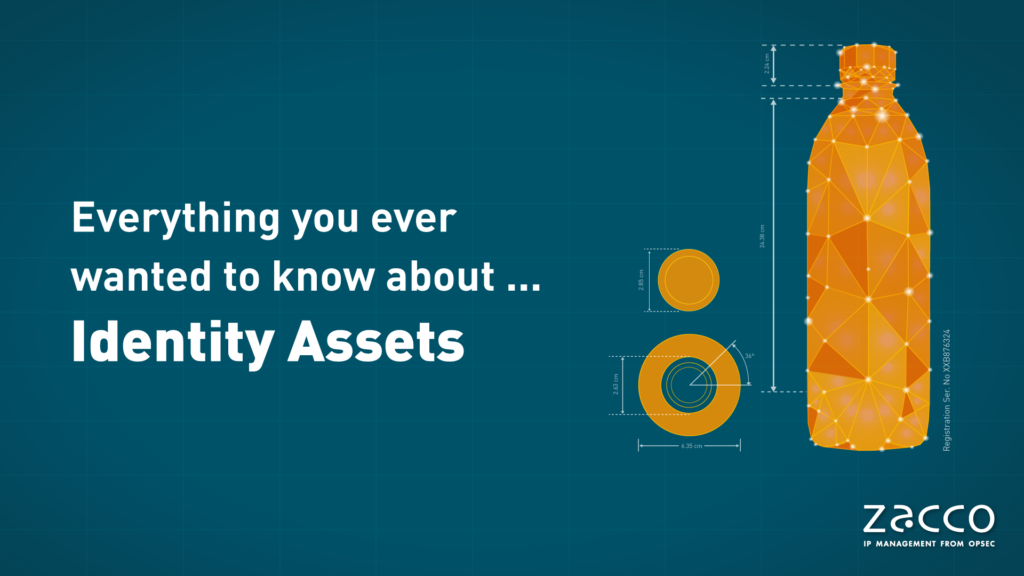Everything you ever wanted to know about … Identity Assets

How is brand identity changing? What does this mean for maintaining and protecting brand value? How are brand identity and authenticity interrelated and in what ways is digitalisation redefining both? How is intellectual property management responding?
In the second in our series of Q&As, we are pleased to share everything you ever wanted to know about Identity Assets. This topic will explore the changing role of brand identity and why digitalisation is amplifying its complexity and moving it into new environments, as well as how OpSec and Zacco are coming together to assist leading brands in embracing opportunities and counteracting emerging threats to their identities.
Intellectual property spans an ever more extensive ecosystem. It requires a multifaceted approach to protecting IP assets in all their forms, whether digital or physical, from those that exist today to those with future potential. Lisa Arrowsmith, Chief Product Officer at OpSec Group, sat down with Stefanie Wood, Director of Product Management for Online Brand Protection (OBP), and Magnus Ljungdahl, responsible for Identity Assets at Zacco, to discuss the evolution of Identity Assets, the intersection of brand protection and enhancement, and how brand identity and authenticity are evolving as consumer attitudes and technology exert their influence.
What are Identity Assets and how have they evolved beyond trademarks?
Historically, a trademark represented a mark of authenticity and worth, often reflecting the quality of product materials, manufacture, and testing. Brands have taken on greater cultural significance and their propositions have become more complex, often becoming a reflection of the zeitgeist. As products and services have changed and avenues of interaction with consumers have evolved, so too has brand identity, expanding beyond logos and trademarks to comprise anything that could be considered a unique identifier. This includes shapes, sounds, content and copyright, domain names, social media handles and, increasingly, corporate values.
With digitalisation creating new markets, methods of interaction with consumers, and forms of competition, Identity Assets have evolved to portray and maintain brand value, ensuring that the brand ‘voice’ still resonates amongst the many demands on consumer awareness and attention. When managed effectively, these assets can reinforce one another, often in the smallest details of how a brand is presented, from its appearance online or tone of voice, to the characteristic feel of a product or even an unboxing experience, unheard of a decade ago.
“identifiers, many times seen as merely ‘distinctive’, were in fact potential assets that could be both protected and monetised”
03:32 | Magnus Ljungdahl, Business Development Responsible – Identity Assets, Zacco
What does authenticity have to do with brand identity and reputation?
Brand identifiers retain a vital role in consumer recognition, establishing trust in the origin and implicit quality of products. This is often interpreted as authenticity. To counteract imitation or counterfeit products, brands add security and enhancement measures, which are increasingly integral to brand protection and the product itself. For example, replica sports shirts may feature team badges with added security yarns or an authenticity tag. At the same time, consumers often leave temporary stickers on baseball caps to communicate their authenticity and newness to others. Some of these measures may also act as calls to action for brands to engage consumers.
“People have access to retailers across the globe, they might visit fake websites by mistake, and even major platforms are locked in a constant struggle to remove counterfeits and poorly produced goods.”
10:17 | Stefanie Wood, Director of Product Management - OBP, OpSec
Since consumers can now interact with brands directly as well as with each other, these conversations are also contributing to brand identity. A good example is the noticeable shift towards sustainability, as brands promote their environmental responsibility. Using authenticity in this way can help reframe brand appeal and positioning, as well as establishing corporates value and reputation. However, failure to live up to commitments and claims can damage trust, as in the case of ‘greenwashing’, making it hard to rebuild trust and elevate identity. As many brands are discovering, consumers now demand greater assurances that both values and products are genuine.
How is brand identity being shaped by shifting consumer attitudes and interactions?
Greater access to information is increasing awareness of brand behaviour and operations, but brands can also use this information to establish credibility, back up their corporate values, and extend their propositions. Consider for example the supply chain and product data held in traceability systems, which are often implemented for regulatory or compliance reasons. This data could also provide evidence of sustainable practices or contribute to circularity programs. Authenticity is still the underlying value, but it now applies to both products and values.
“There needs to be a plan and process in place to protect that story, to protect that identity, from misuse or misappropriation.”
15:02 | Stefanie Wood, Director of Product Management - OBP, OpSec
Websites can equip consumers to research and purchase genuine products. Add social media and this becomes a community space, populated by engaged consumers who communicate with brands and each other in real-time. This feeds into brand identity and reputation, creating insights into changing sentiment about brands, as well as competitors. Successful management requires the instincts and capabilities to counteract negativity, particularly if this results from the distorting influence of bad actors that impersonate brands or sell counterfeit products.
With everything moving online, how should brands protect their identity?
Brands have used their online presence to open new markets, access consumers, and reach followers, regardless of location. For OpSec and Zacco, digitalisation has required a shift in approach to address the interrelationships between IP assets and the fundamental fact that IP rights often represent the most significant forms of value in an organisation. This means being able to tackle online selling of fake goods, impersonation of brands, pirating of digital media, compromising of domain names, and even cybersecurity concerns. Brands can use their online presence to be truly ubiquitous, but this comes with increased exposure and heightened vulnerability.
“Some companies are even creating digital assets, such as NFTs or metaverse experiences, to accompany their products, acting as a sort of gateway into private online communities.”
18:56 | Magnus Ljungdahl, Business Development Responsible – Identity Assets, Zacco
Growth in the digital landscape, notably the metaverse, means new environments for brands to establish their identities. Virtual storefronts have flourished, and are now selling both physical and digital items. Yet when it comes to IP, the metaverse and Web3 are still largely unregulated, making enforcement difficult, even when infringements are detected. However, patent and trademark offices are expanding their definitions of digital assets and courts have started to establish precedents into what constitutes infringement. As in the physical world, the metaverse offers opportunities to license IP, although this invariably comes with complexities.
What does a multidimensional approach look like and why does it make sense?
Brand attributes are valuable assets, in need of protection using established and emerging methods. Recognition and trust also remain essential aspects of brand value and integral to many buying decisions. Yet what was once merely distinctive might now support an identity worth billions, with authenticity a more intangible and fragile asset than ever. Trademarks remain critical in enforcing rights, from removing fake goods and brand imitations online, to resolving domain name disputes or equipping customs agents. Being able to establish, detect, and enforce against the many forms of infringement requires an increasingly diverse range of tools and skills.
“it’s important for OpSec and Zacco to help the organisations that we work with to think creatively, exploring the best ways to build brand value”
10:49 | Stefanie Wood, Director of Product Management - OBP, OpSec
Monitoring and enforcement should span multiple responses, from online takedowns and customs seizures to court action where necessary. Technology is helping tackle the sheer breadth and scale of threats, from AI-based tools to detect counterfeits online to systems that provide early warning of impersonation and reputational risk. IP rights that are not used or enforced are merely costs, so licensing and IP management platforms can also help organise Identity Assets and monetise external relationships. Incorporating brand enhancement and protection during the development stages of the brand or product lifecycle can help reconcile objectives downstream.
How do OpSec and Zacco tackle brand identity and authenticity together?
From developing and securing IP rights to ongoing monitoring and maintenance, we can help create, protect, monetise, and enforce most elements of brand identity, through physical, digital, and legal means. Ultimately, this is about helping navigate increasing complexity, becoming a partner throughout the lifecycle of a brand. Zacco clients can access a range of solutions, from licensing and online brand protection to authentication and traceability. OpSec customers benefit from the knowledge and technical expertise of one of Europe’s leading IP management teams, as well as access to IPview, a rights management platform built in-house by IP experts.
“Threats to brand reputation have changed over the years, so our services have similarly evolved to protect all those factors of trust.”
05:39 | Stefanie Wood, Director of Product Management - OBP, OpSec



Lisa Arrowsmith
Chief Product Officer, OpSec Group
Lisa is responsible for directing the development of platforms and solutions at OpSec Group, ensuring customer-centric design and market-leading innovation across the portfolio.
Magnus Ljungdahl
Business Development Responsible – Identity Assets, Zacco
With a background in IP and physical and digital brand, Magnus is responsible for expanding Zacco services, ensuring they follow best practice and can meet the needs of tomorrow’s clients.
Stefanie Wood
Director of Product Management for Online Brand Protection, OpSec
Stefanie is responsible for online brand identity and reputation protection at OpSec, with a passion for protecting IP online and deep expertise in dark web cybercriminal practices and IP misuse.
